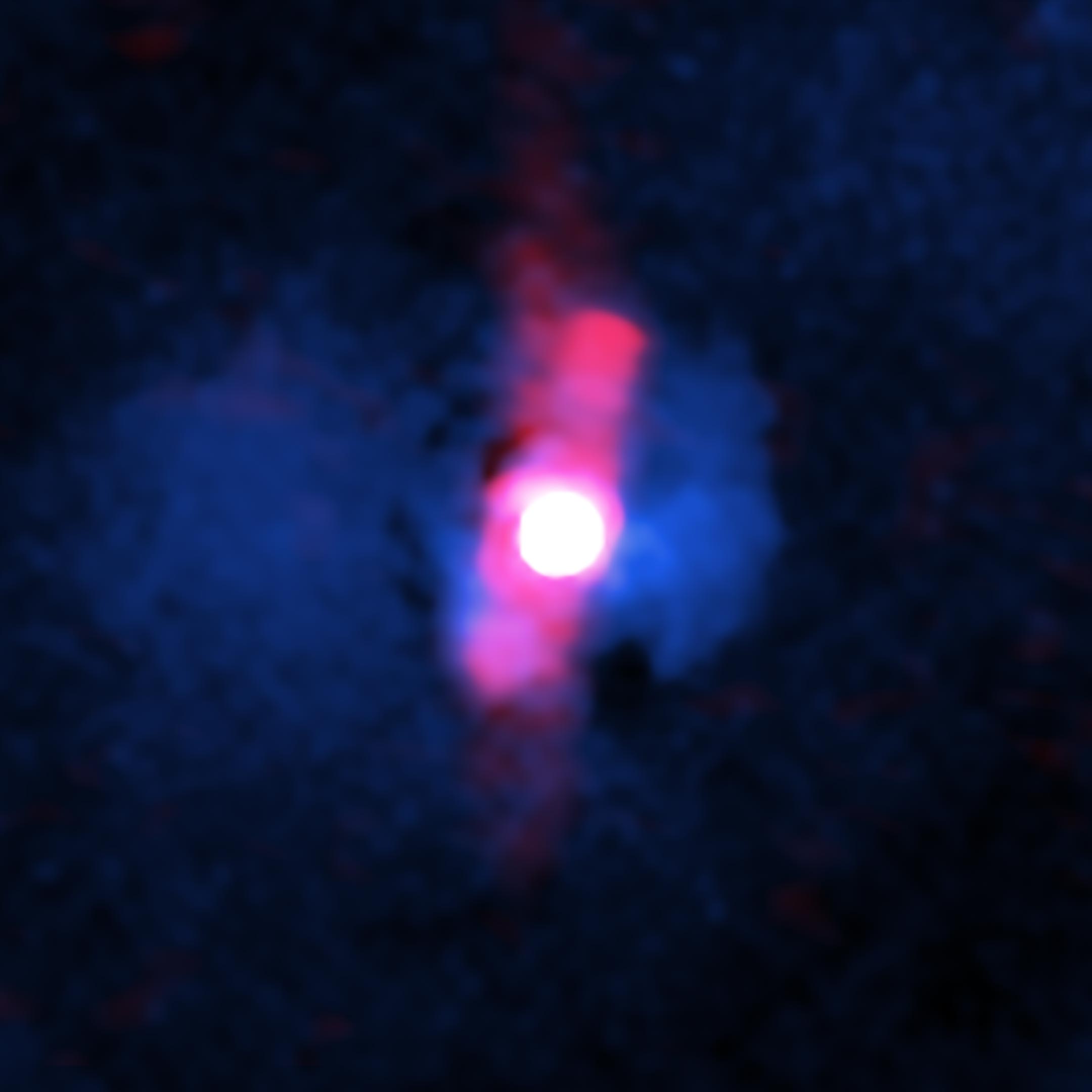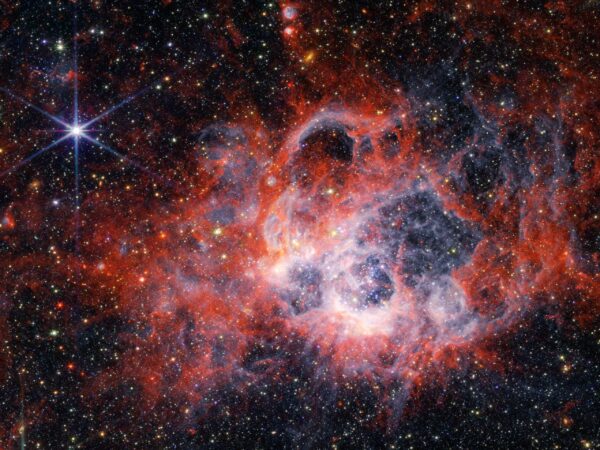
# Exploring the Minimal Impact of Quasar H1821+643 on Its Host Galaxy
In the center of these images is the quasar H1821+643, a rapidly growing supermassive black hole that astronomers have found is underachieving, despite producing intense radiation and a jet of particles seen in radio data from the Very Large Array. Credit: X-ray: NASA/CXC/Univ. of Nottingham/H. Russell et al.; Radio: NSF/NRAO/VLA; Image Processing: NASA/CXC/SAO/N. Wolk
## Introduction
Astronomers have made a surprising discovery about the quasar H1821+643, a rapidly growing supermassive black hole located in a galaxy cluster. Despite its intense activity, this quasar is not having the expected impact on its host galaxy, overturning previous assumptions about the role of quasars in the universe.
## What is a Quasar?
Quasars are rapidly growing supermassive black holes that pull in material at an incredibly high rate. They are known for their intense radiation and the production of powerful jets of particles. H1821+643 is the closest quasar to Earth, situated in a galaxy cluster approximately 3.4 billion light-years away.
## The Impact of Quasars on Their Surroundings
Typically, supermassive black holes in the centers of galaxy clusters play a crucial role in regulating the growth of stars by preventing intergalactic hot gas from cooling down too much. However, quasars, due to their high activity levels, were expected to have a more significant impact on their surroundings.
## Research Findings
Recent studies using NASA’s Chandra X-ray Observatory and the Very Large Array (VLA) have revealed that H1821+643 is actually less influential than other giant black holes in similar clusters. The team of astronomers carefully analyzed the X-ray data to uncover the minimal effect the quasar is having on its host galaxy and the surrounding hot gas.
## Detailed Study Reveals Surprising Findings
Using Chandra, the researchers observed that the density of gas near the black hole in the center of the galaxy is higher, and the gas temperatures are lower than in regions farther away. This indicates that the quasar is not providing sufficient energy input to prevent the hot gas from cooling down and flowing towards the cluster’s center.
## Conclusion
The findings of this study challenge previous assumptions about the impact of quasars on their surroundings. Despite their intense activity levels, some quasars may not play as significant a role in driving the fate of their host galaxies as previously thought.
## FAQs
### What is the significance of the discovery about quasar H1821+643?
The discovery of the minimal impact of quasar H1821+643 challenges existing theories about the role of quasars in the universe. It suggests that not all rapidly growing supermassive black holes have a significant influence on their surroundings.
### How was the study conducted?
Astronomers used data from NASA’s Chandra X-ray Observatory and the Very Large Array to analyze the hot gas surrounding quasar H1821+643. By carefully studying the X-ray emissions, they were able to determine the quasar’s effect on its host galaxy.
### What implications does this research have for future studies?
This research opens up new avenues for investigating the relationship between quasars and their host galaxies. Understanding the impact of quasars on their surroundings is essential for gaining insights into the evolution of galaxies and the universe as a whole.
In conclusion, the study of quasar H1821+643 has provided valuable insights into the complex interactions between supermassive black holes and their host galaxies. Further research in this area will undoubtedly shed more light on the mysteries of the universe.




















